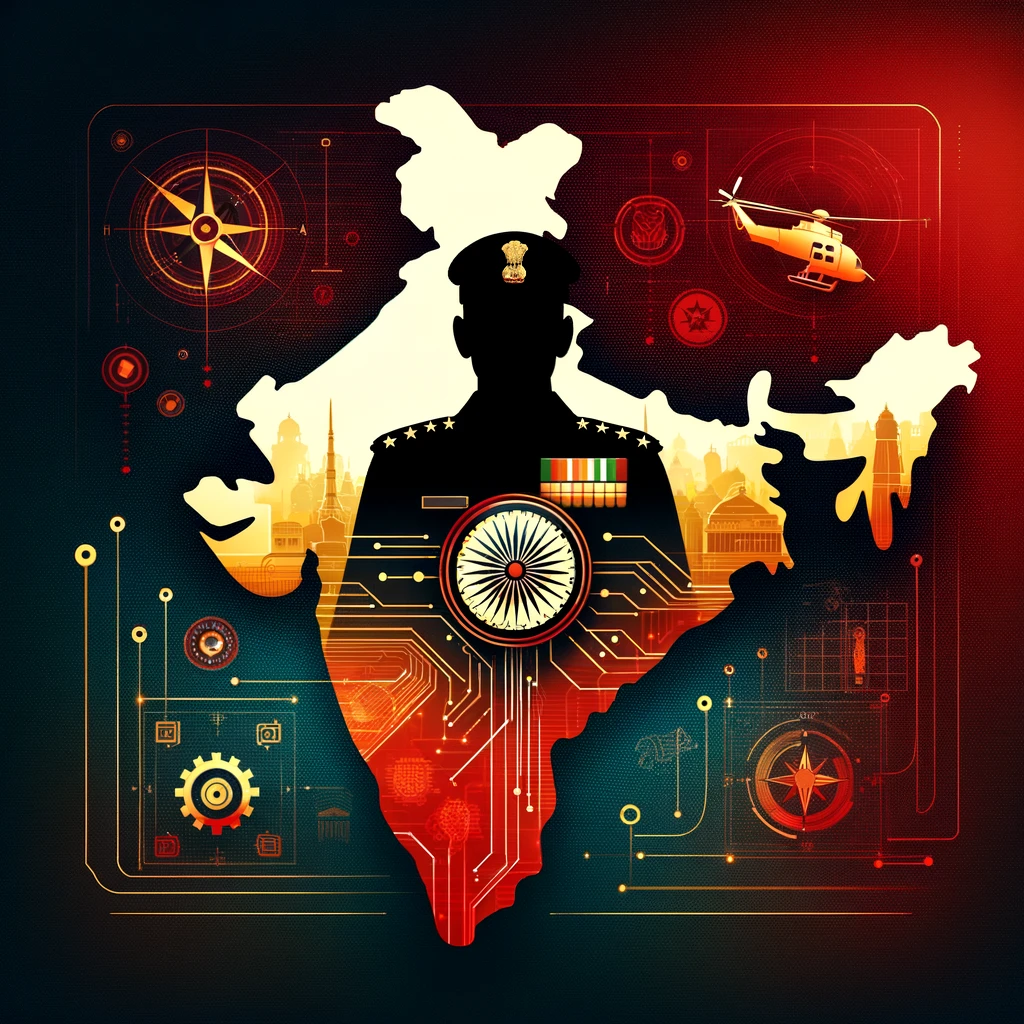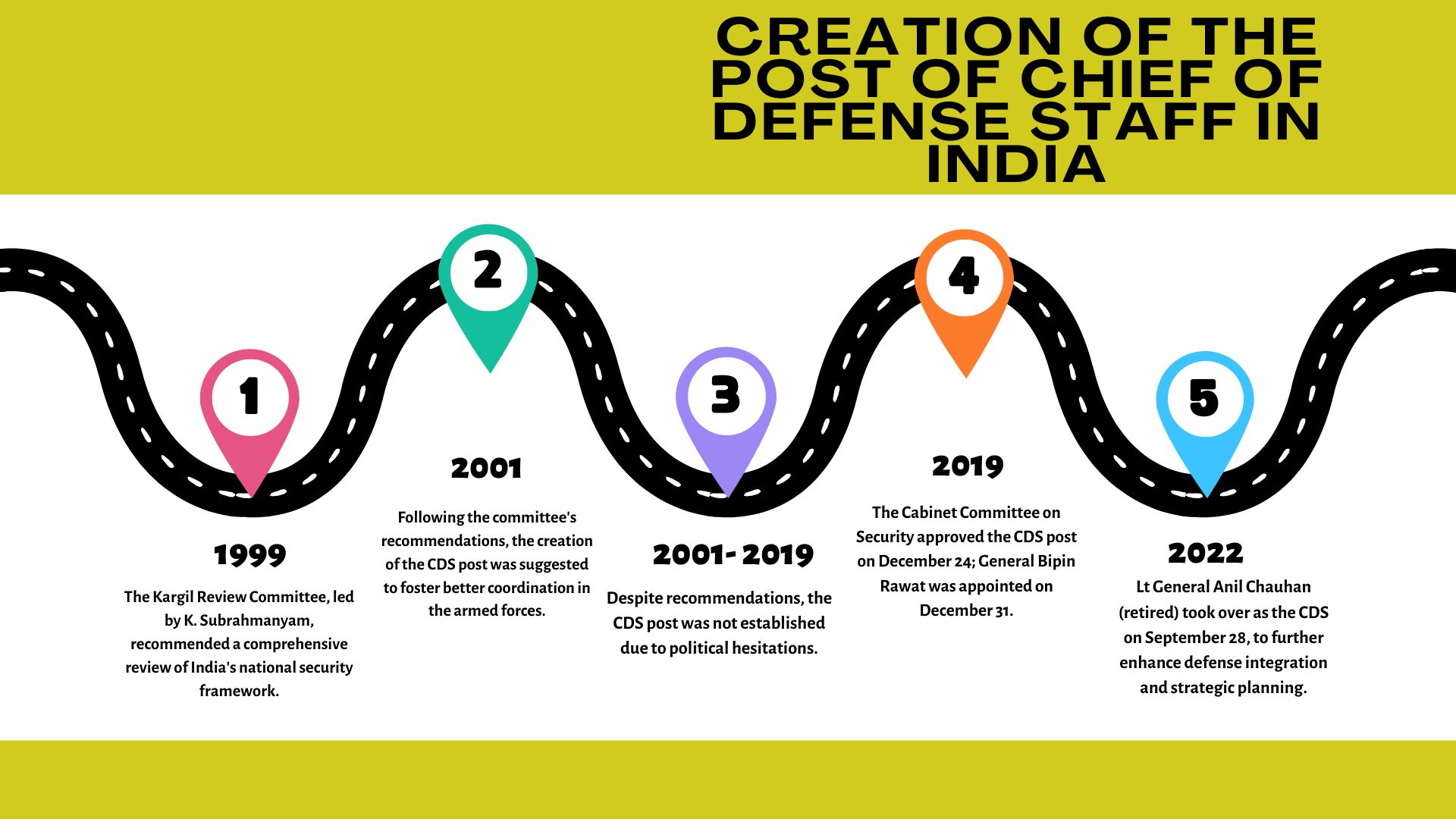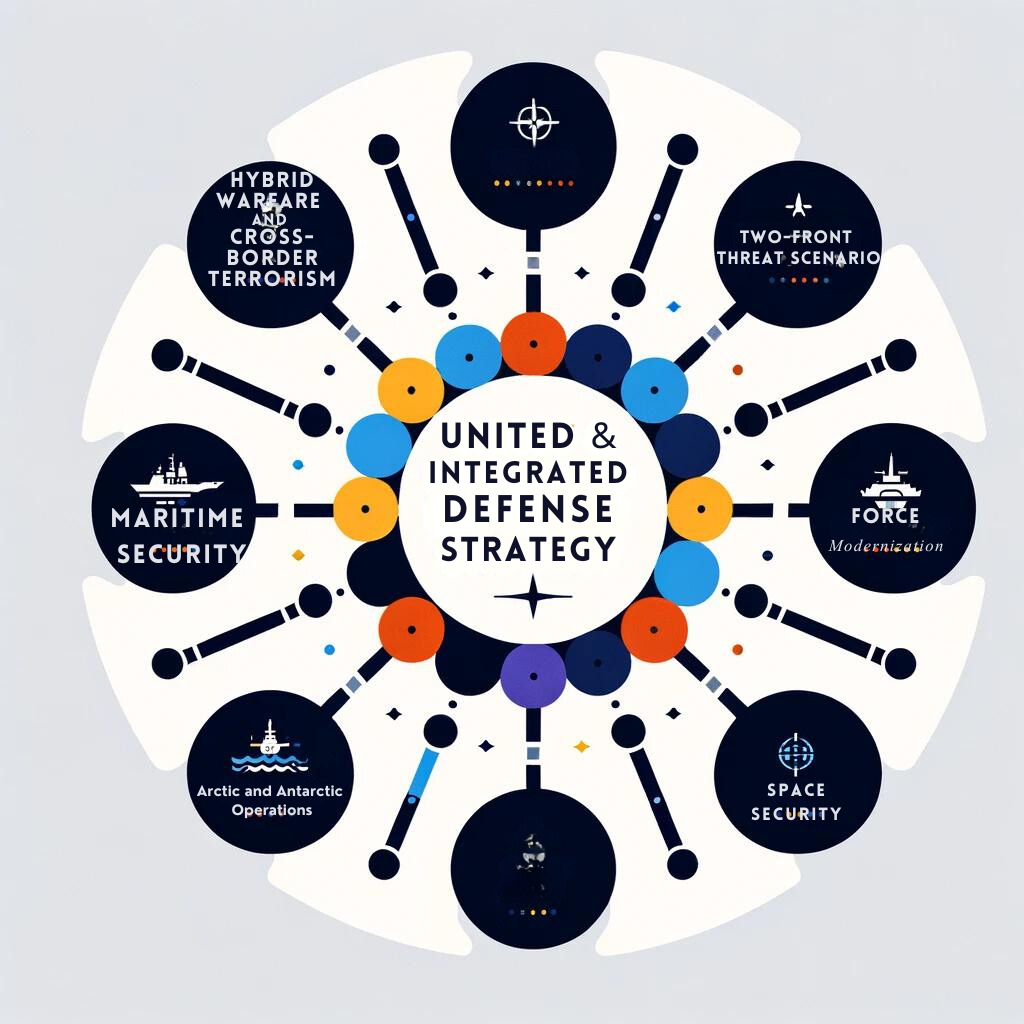India faces ongoing challenges to its national security. The creation of the Chief of Defense Staff (CDS) in 2019 aimed to improve combat efficiency and prepare for new strategic emergencies. However, its progress has been mixed. New posts like Vice CDS and Deputy CDS are being considered to support the CDS’s numerous roles. Increasing integration among India’s armed forces is essential for seamless collaboration, unified strategies, and better operational effectiveness.
Origin of the Article
This editorial is based on “Has the Chief of Defence Staff post improved India’s combat efficiency?” published in The Indian Express on 16/05/2024. The article discusses the role of the CDS in India’s defense integration efforts and highlights the challenges and solutions.
Relevancy for UPSC Students
Understanding the role and challenges of the CDS is crucial for UPSC aspirants. It relates to General Studies Paper 3, focusing on internal security and the mandate of various security forces. It also helps in comprehending the intricacies of defense management and strategic preparedness, which are key to acing the examination.

Why in News
The topic is significant for the UPSC Civil Services Exam as it delves into the role and impact of the Chief of Defence Staff (CDS) in India’s defense integration, a key aspect of internal security under GS Paper 3. Recent developments, including potential new posts like Vice CDS and Deputy CDS, highlight ongoing efforts to enhance jointmanship and strategic preparedness among the armed forces. Understanding this role is crucial, given the historical and emerging security challenges India faces, and it aligns with previously asked questions on defense management and security forces’ mandates.
Rationale Behind Appointing the CDS
Promoting Jointmanship
Historically, India’s military has struggled with a lack of integrated planning and resource optimization among the Army, Navy, and Air Force. This deficiency was notably evident during the 1999 Kargil War, where coordination issues highlighted the need for better integration to enhance combat effectiveness.
Establishing a Single Military Adviser
The Chief of Defense Staff (CDS) serves as a single-point military adviser to the government, bridging the gap between civil and military perspectives. Before this, fragmented advice from individual service chiefs often resulted in a lack of cohesive strategic guidance.
Enhancing Operational Synergy
The CDS is tasked with fostering greater synergy and interoperability among the services, particularly through integrated theater commands. For example, during the 2004 Indian Ocean tsunami relief efforts, better coordination could have significantly improved the effectiveness of the response.
Optimizing Resource Allocation
By promoting jointmanship, the CDS aims to rationalize defense expenditure and ensure optimal utilization of resources across the services. This approach helps reduce redundancy while enhancing the overall efficiency of defense operations.
Strategic Force Management
The CDS oversees long-term defense planning, force structuring, and capability development to align military preparedness with evolving security threats. This strategic role ensures that India’s armed forces are well-equipped to handle future challenges.
Timeline for the Creation of the Post of Chief of Defense Staff in India

1999: The Kargil Review Committee, led by K. Subrahmanyam, recommended a comprehensive review of India’s national security framework. This included the need for a more integrated approach to defense decision-making and better coordination between the Defense Ministry and Service Headquarters.
2001: Based on the Kargil Review Committee’s report, a Group of Ministers (GoM) recommended the creation of the CDS post to enhance jointness and integration in India’s armed forces.
2001–2019: Despite these recommendations, the CDS post was not implemented due to a lack of political will and consensus. Meanwhile, many other countries like Italy, France, China, UK, USA, Canada, and Japan, had already established similar positions to improve their military integration.
2019: On December 24th, the Cabinet Committee on Security decided to create the CDS post. General Bipin Rawat was appointed as the first CDS on December 31, 2019. This step aimed to provide cohesive military advice to political leadership and better integrate service inputs.
2022: Lt General Anil Chauhan (retired) was appointed as the CDS on September 30, 2022, continuing the effort to strengthen India’s defense integration and strategic planning.
Factors Contributing to the Mixed Trajectory of the Office of CDS in India
The Office of the Chief of Defense Staff (CDS) in India has navigated a complex landscape marked by bureaucratic challenges and evolving defense paradigms. These factors contribute to its mixed success in enhancing military efficacy and fostering inter-service coordination.
Tragic Interruption and Policy Discontinuity
The untimely death of General Bipin Rawat in an air accident in December 2021 led to a nine-month delay in appointing his successor. This gap impacted the continuity and effectiveness of defense leadership and strategic planning.
Overload of Responsibilities
The extensive responsibilities assigned to the CDS, which include military proficiency, administrative finesse, and strategic advisory roles, can detract from focusing on core objectives like fostering joint operational synergy.
Lack of Adequate Consensus Among the Services
Differing priorities and perspectives among the Army, Navy, and Air Force have posed challenges. Achieving consensus on integrated theater commands has been particularly difficult, as each service has its own traditions, cultures, and priorities.
Emerging Defense Challenges Necessitating a More Unified and Integrated Approach
In the face of emerging defense challenges, India recognizes the need for a more unified and integrated military approach. This shift is crucial for maintaining national security and enhancing operational synergy among the armed forces.

Two-Front Threat Scenario
India faces potential simultaneous conflicts with China and Pakistan. The Galwan Valley clash with China in 2020 and frequent ceasefire violations by Pakistan underscore the need for coordinated military preparedness on both fronts.
Hybrid Warfare and Cross-Border Terrorism
The rise of hybrid warfare, which includes conventional and unconventional tactics like cross-border terrorism, requires a comprehensive, multi-dimensional response. The ban on mobile applications like TikTok in 2020 highlights the evolving nature of these threats.
Maritime Security and Blue-Water Ambitions
As India aims to establish itself as a maritime power, a strong, integrated maritime strategy involving the Navy, Coast Guard, and other agencies is essential. The Indian Ocean Region’s strategic importance necessitates a coordinated naval presence.
Force Modernization and Capability Development
Effective force modernization requires a holistic approach, avoiding duplication and ensuring interoperability. Acquisitions like Rafale fighter jets and the Indigenous Aircraft Carrier (IAC) highlight the need for joint training and integration.
Space Security and Counter-Space Capabilities
With increasing reliance on space-based assets, ensuring space security and developing counter-space capabilities are crucial. India’s Mission Shakti in 2019 demonstrated the importance of coordinated efforts in this domain.
Arctic and Antarctic Operations
Climate change is opening new opportunities and challenges in the Arctic and Antarctic regions. Developing joint defense capabilities for operations in these hostile environments is becoming increasingly important.
Check out our blog on India’s Technology Trajectory.
Measures to Enhance Integration of Indian Armed Forces
These initiatives aim to streamline command structures, foster inter-service collaboration, and leverage advanced technologies for enhanced defense capabilities.
Enhancing Role Clarity
Streamlining the roles of the CDS and service chiefs is essential. Creating positions like Vice CDS and Deputy CDS could enhance the effectiveness of the Chief of Defense Staff institution.
Integrated Theatre Commands
Implementing integrated theatre commands should be prioritized to promote joint management and resource optimization. The Inter-Services Organizations Act is a significant step in this direction.
Cross-Service Rotational Assignments
Introducing cross-service rotational assignments will foster mutual understanding and collaboration among the services. This helps break down cultural barriers and promotes a unified perspective on defense operations.
Open Source Intelligence (OSINT) Fusion Centers
Establishing OSINT fusion centers will enhance defense planning and operations. These centers can aggregate and analyze publicly available information to generate actionable insights and threat assessments.
Quantum-Secure Communications Network
Developing a quantum-secure communications network using quantum cryptography and QKD protocols will ensure secure and unbreakable communication channels, safeguarding against cyber threats and data breaches.
Conclusion
In conclusion, the role of the Chief of Defense Staff (CDS) is pivotal for India’s defense integration and combat efficiency. While challenges persist, the creation of this post marks a significant step towards unified command and strategic preparedness. For UPSC aspirants, understanding the nuances of defense reforms is essential, as these developments shape India’s national security landscape and influence policymaking.


